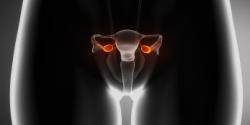Ovarian Cancer

Cervical cancer occurs due to growth of abnormal cervical cells. When found early, it can often be successfully treated. The disease can be diagnosed by means of a PAP-smear.
Ovarian Cancer Risk Factors and Symptoms
Risks include age, overweight, family history of breast, colorectal or ovarian cancer, and smoking. The disease’s most common symptoms are pelvic/lower back pain, frequent urination, constipation, tiredness, and menstrual cycle changes.
Sample Treatment Program
There are three different types of cells in the ovaries, and the tumor’s characteristics will depend on the type it develops from (epithelial, germ cell or stromal).
Diagnostics:
- Full blood tests (biochemistry, electrolytes, coagulation profile, sex hormones, tumor markers)
- PET CT (to rule out mets into other organs and/or skeletal system)
- Revision of existing biopsy
- US Doppler scan of the reproductive tract
- Gynecological oncologist’s consultation
Therapy:
In case the diagnosis is confirmed, there are two treatment options:
- Surgery followed by six courses of chemotherapy
- Three chemotherapy cycles followed by surgery and three further chemo cycles.
The decision is made by the treating gynecological oncologist.
Routinely the surgery performed is a radical hysterectomy with BSO (bilateral salpingo-oophorectomy). Sometimes and omentectomy is also indicated. The cost of the operation includes four days of hospitalization, as well as express biopsy and final histopathology.

















 Toronto:
Toronto:  London:
London: 



